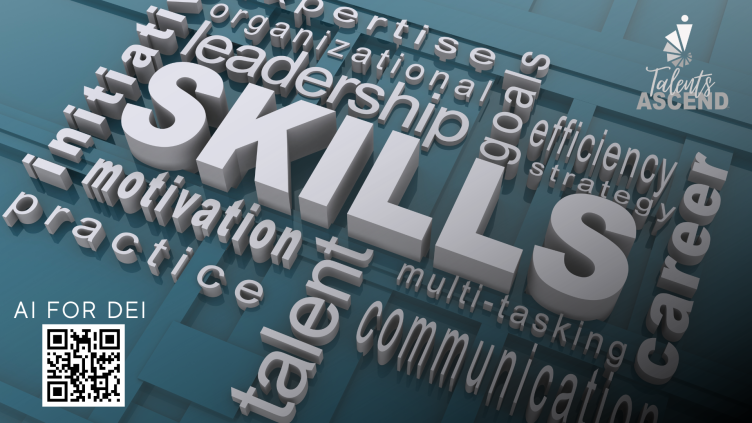Military Skills Translator – how do they relate to a civilian resume?
By: Robyn Grable
Military veterans develop distinctive capabilities and valuable skills through real-world, high-pressure experience. From leadership to self-sufficiency and integrity, it’s hard to find a group of candidates that has more to offer an organization than military veterans. The age-old question that employers always ask, “How do we accurately translate the skills a military veteran has and relate them to the career positions in our company?” The military has its own language and culture. The DOD and the American taxpayers spend millions each year to train our military, which results in valuable skills that are highly transferable. Everyone knows that and believes it. Yet, the question remains of how to bridge the gap?
“Veterans name “finding a job” as the greatest challenge in transitioning, with transferring military skills to a civilian environment a major hurdle. Aside from the difficulties of the current job market, one of the greatest challenges veterans report in finding a job is explaining how their military skills translate to the civilian workforce. Nearly all believe they have the skills needed to land their ideal job, but the majority express concerns about how to translate their skills to a business environment.” Oregon State Study
To address this challenge, there are thousands of articles, studies and veteran nonprofit organizations touting a military to civilian skills transition program. “A recent study found that 53% of new post-9/11 veterans used employment programs within the first 90 days after discharge. However, there is a dearth of empirical literature about what these programs offer, who is more likely to utilize them, or how effective they are in helping veterans obtain gainful employment.” So, what makes a program great, and of what should you beware?
Relevant key issues to consider:
Title translator only: These translators simply look at the title of the military occupation and provide a list of jobs that are comparable to that title. i.e., Infantry=Security. The problem with this translator is that 65% of military transitioning out, look for something different than what they did in the military. They want to use transferable skills not just comparable ones. 100% of veterans have skills relative to a multitude of occupations not related to their core title, such as leadership, culture diversity, problem solving, teamwork and learning agility.
Still requiring a resume: 99.9% of translators still use a resume. A resume is the number one barrier for military transition. Forcing a candidate to compare tasks required to the skills they’ve acquired will result in a mismatch 9 out of 10 times. Often highly desirable job skills can be lost in trying to “fit” into a poorly designed job description. Furthermore, filtering on previous employers, previous titles or industry experience can’t be addressed by any translator that still uses a resume.
Still requiring an application first: Applications are the second biggest barrier for military transition. First, how does a service member begin to know which companies they should “apply” to. There are 33.2 million small businesses in the US. Less than 1% of businesses in the US are large corporations with household names. Some of these large corporations do have a home-grown translator which allows a veteran to enter their military occupation and see which positions they “match” to. Except they aren’t matching skills. They typically match titles, which don’t take into account secondary occupations or the thought that a veteran has transferable skills to other occupations. The application then takes a candidate through a series of questions regarding required tasks which can unintentionally, and incorrectly, leave the veteran feeling disqualified.
Those who use a skills assessment: Test anxiety is real. The anxiety increases for those already facing the stress of instantaneous immersion back to civilian life or being underemployed and not currently providing enough for their family. Comparing a person to a “model” based on how they answer questions is seen only as “more likely” an acceptable demonstration of skills but is typically used to eliminate a candidate rather than include them.
Large corporations can afford to create a military program yet, continuing to fish the exact same way will not produce different results no matter how many more recruiters are added to the program. Branding your company as military ready without getting rid of the barriers is at best naïve and ineffectual. Worse yet, it will result in a bad reputation that only a select few get through and even less put up with.
Small businesses can’t often afford to build a military program. What they can successfully build is a skills-based sourcing methodology that wins every time. Small businesses need to be more agile as budgets aren’t flush with extra cash to cover the costs associated with a high rate of turnover. Small businesses can more easily adopt a skills-based sourcing model because the business owner is still close to the day-to-day operations and knows intimately what success looks like for their business.
The civilian resume has repeatedly demonstrated its failure to accurately convey the vast set of skills and abilities acquired through the unique experience of military service. The use of a military skills translator does not address the issue related to hiring managers, recruiters and HR professionals failing to understand how military skills translate to their organization. Skills-based sourcing does address these issues by eliminating barriers and bias. Skills-based sourcing brings together the right candidate with the right skills for the position and for the business. Knowing the skills your organization needs and looking for those skills, regardless of where, when or how a candidate earned them, exponentially increases the openness to diverse talent. Creating equity, inclusion and economic prosperity.

